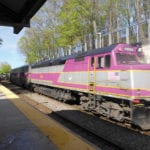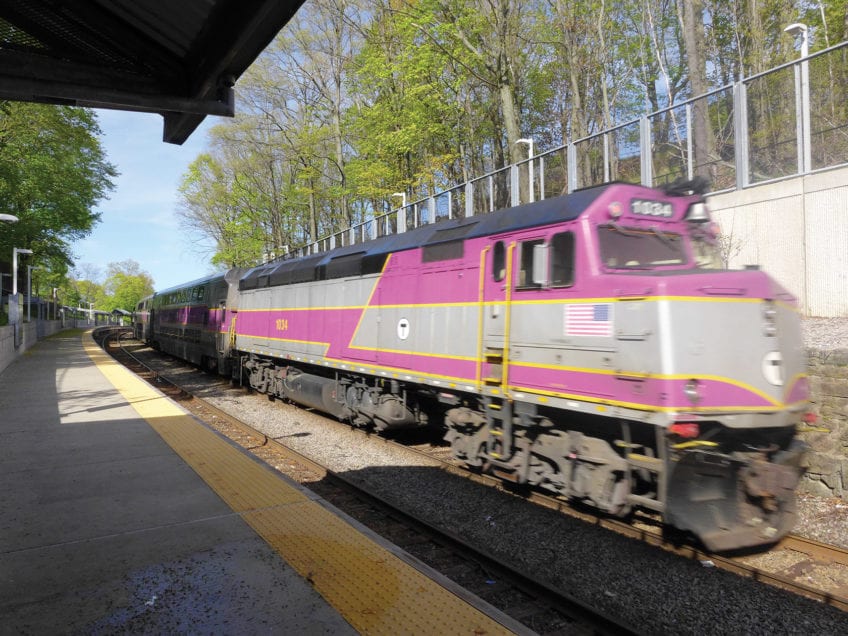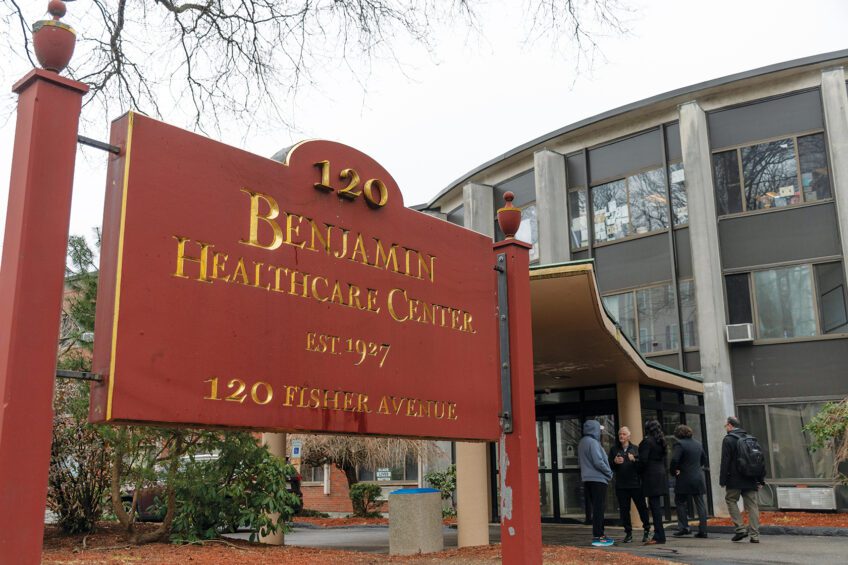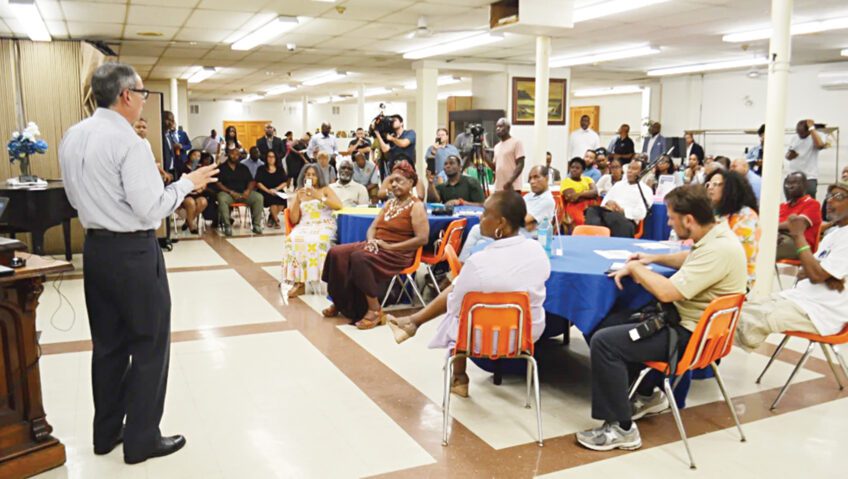
The state’s Focus40 planning group offered a presentation at MIT’s Media Lab last week with panels and a short overview of proposals to guide Massachusetts’ transportation investments and initiatives over the next 23 years.
On the web
Visit the Focus40 website: https://www.mbtafocus40.com/
“Anyone who thinks all the challenges we have in the system today are going to be solved in a five-year [capital planning] cycle is deluding themselves. We need to set a longer-term road map,” said Scott Hamway, manager of long range planning at the Massachusetts Department of Transportation.
Hamway said the Focus40 team’s goals include reducing private vehicular use, improving passenger experience, reducing climate impact and closing access and opportunity gaps. Melissa Kim of the Focus40 project team presented a map that identified where there was a scarcity of jobs available within 45 minutes of travel — either due to lack of local jobs or lack of quick transportation to job centers — to identify transit link needs.
Leading up to the “Ideas of March” open house event, the Focus40 team gathered approximately 3,000 responses from a an online survey and held conversations with MBTA staff and meetings with organizations that included transit activists, community groups and education leaders. Focus40 also spoke with riders at rapid transit, bus and commuter rail stations. The street team’s surveying time at each type of transit stations was allocated based on current use levels, with more time spent at the most-trafficked systems. A consequence of this approach may be that riders on lines that go less-used due to slow, infrequent or ill-timed service also had less of a voice represented in the street team’s surveying.
Respondents told Focus40 that their top concerns as commuters were reliability; frequency of trains, buses and subways; amenities; and service speed.
Focus40’s proposals are being put forth for public feedback, with finalization planned for a later stage. Identifying or estimating financing is not part of plans at this stage.
Low-hanging fruit
With the next 20-plus years of financing largely unpredictable and improvements needed as soon as possible, Hamway said, Focus40’s proposals emphasize cheap and quick-to-implement solutions, with later, costlier steps as options should these not work.
For instance, while the city put forth the idea of extending the Orange Line into Roslindale in its recently-released Go Boston 2030 report, Hamway advises piloting a designated bus lane between Roslindale Village and Forest Hills instead.
“If there are thing we can do tomorrow, why wait for a far bigger project that’ll be harder to implement?” he said.
Hamway told the Banner that an attempt to make the 28X run in a designated bus lane on Blue Hill Ave several years ago was too big a change at once for the community to accept. The approach he now recommends is to identify key congested street sections where implementing short stretches of designated bus lanes can impact a high number of riders, instead of introducing a full, multi-mile bus rapid transit line.
Mela Bush Miles, chair of the Fairmount Indigo Transit Coalition and lead community organizer for the Greater Four Corners Action Coalition, praised the idea of a pop-up bus lane, though also said Focus40 needs to do more to capture the voices of those who rely most on public transit. Some steps, she said: improving efforts to publicize meetings like this one as well as holding some meetings at places like Prince Hall Masonic Lodge that would turn out a different audience. At the MIT event there were “not a lot of the folks who utilize public transit more than others because they have no other options,” she told the Banner.
Fairmount line
Hamway said it is challenging to bring faster cars to the Fairmount line because doing so requires a new fleet of vehicles as well as new places to store them. Instead ideas for improving service on the line include providing more mid-day trips. Currently its schedule focuses on weekday morning and evening services to target commutes to and from work.
Bush Miles said that research conducted by Nelson/Nygaard Consulting Associates found that many people use the Fairmount for far more than getting to work downtown, including for social, commercial and medical purposes throughout the day.
“On this line, people are doing reverse commutes, traveling around the community, not just going to work but going to church or the doctor, visiting grandkids or going shopping,” Bush-Miles said. “Focus40 needs to really look at public transit as a lifeline for moving around and not just getting to work.”
Meanwhile, disconnect
Even as the state looked to fill in equity gaps and improve service long-term, it veered on the edge of slashing access short-term. Last week, the MBTA announced it would seek to save $10 million per year by terminating weekend commuter-rail service, before public backlash spurred the state to disavow the idea on Monday.
Officials who had suggested cutting rail service presumed that the impact will be lessened because of lighter use on the rail than other lines. However, many transit activists have said that low ridership may reflect lack of sufficient service to make riding convenient and criticized the MBTA for proposing a service reduction before attaining clear ridership numbers.
Those protesting the cuts said suspending weekend service could strand those who work Saturdays and Sundays, depress patronage to business, reduce other visitors to the city and remove what is many people’s primary public transportation option.






